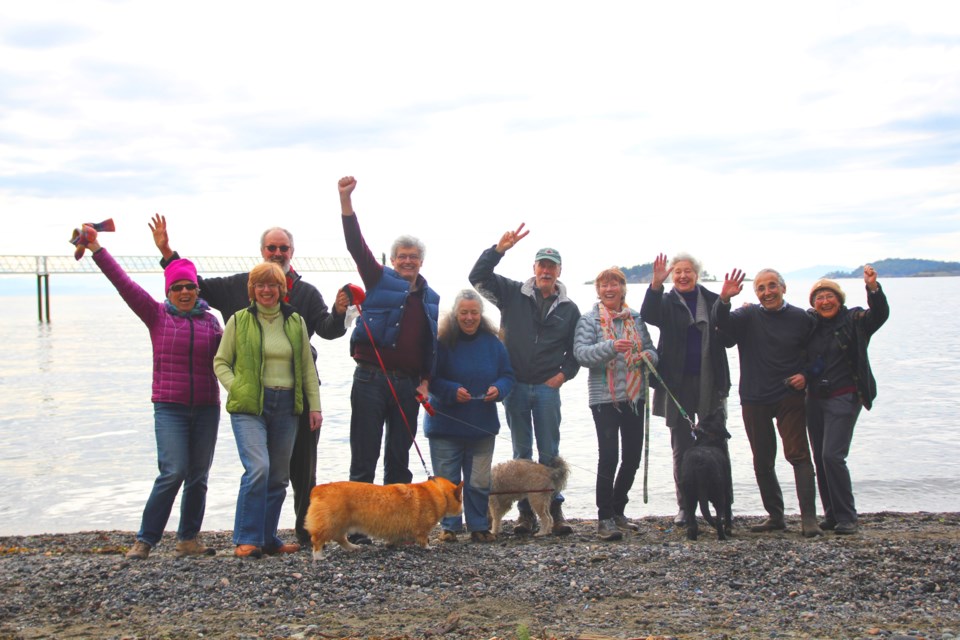An insult, an embarrassment, monstrosities…
These are a few of the descriptions for the docks built along the shoreline of Cape Roger Curtis written in letters by citizens supporting a series of resolutions made by council on Monday night. In a very brief meeting on the matter, Municipal Chief Administrative Officer Kathy Lalonde read the three resolutions aloud. The first states council’s intention to begin the process of amending Bowen’s Land Use Bylaw to prohibit all private docks at Cape Roger Curtis. The second states Bowen’s jurisdiction over the land extending 300 metres from the high water mark and the fact that docks contradict the Official Community Plan bylaw objectives. And the third states that the municipality will state its objections to the province, and recommend that no further dock applications be approved at Cape Roger Curtis. For each of these, a majority of councillors with the exception of Michael Kaile, Alison Morse and Gary Ander voted in favour of these resolutions.
Among the many letters received by the municipality on this decision, there are only two that oppose council’s actions.
One is by Bruce Russell, who calls the bylaw “extremely vindictive and singular in its intention, if not the icing on the cake for the long-simmering opposition the Cape Trust Society had against the Cape development.”
Russell adds that he is concerned about the inevitability of a lawsuit, and that he wants “no part of that vindictive cost on my tax bill.”
What Russell fears is laid out in a letter written by Stephen Hsia, the lawyer representing the applicants for dock permits on Cape Roger Curtis.
The applicants, writes Hsia, “have engaged environmental engineers and other experts to ensure their proposals comply with all requirements for design and protection of the environment. They have spent substantial time and funds and have followed all laws and requirements. They have faithfully followed all the rules to build their docks, just as any other waterfront owner will have done when building their own docks in other parts of Bowen Island.”
Hsia adds, “the Mayor’s proposed recommendations are discriminatory and unfair to the applicants and the other owners at Cape Roger Curtis… the recommendations may also be illegal, going beyond the municipality’s jurisdiction as provided for in its letter patent.”
When questioned about the threat of a lawsuit, Mayor Murray Skeels simply stated in an interview following the meeting that the, “resolutions were very carefully considered to ensure that they would stand up.”
Councillor Sue Ellen Fast points to the Official Community Plan (specifically objectives 40 and 68 and policy 152, as stated in the second resolution) as adequate justification for council’s decision on the matter.
“There are lots of reasons I voted the way I did,” says Fast. “Ultimately, it is our job to protect the public interest.”
She adds that the importance of this issue and the need to continue working on the community’s approach to dealing with dock applications was re-inforced at last week’s Islands Trust Council Meeting.
“These docks are industrial proposals, not pencil marks on a map,” says Fast. “Now that this new dock technology, like what’s been built at the Cape, is available, municipalities, especially small ones, need to take steps to protect their shorelines.”
Bowen Islander Melissa Harrison presented what she’s learned about these new docks, and the way applications for them have been dealt with in recent years.
“I wanted to warn the Trust Council that there now seems to be this fashion for putting these huge docks in places that might not actually be suitable for docks at all,” says Harrison. “I also wanted to warn them about procedural failures on the part of the Province. It is no longer enough for a municipality to simply rely on objecting to a dock, or expecting provincial officials to interpret bylaws with the understanding that the municipality has jurisdiction over land-use.”
Harrison points to the letter received recently by the Municipality of Bowen Island, stating the expectation that dock applications be decided within 140 days of the application being made.
“It is impossible for a small municipality to do what needs to be done in order to come within that period of time, especially considering the number of meetings that take place within that period,” says Harrison. “A lot of these applications are incredibly complex, and to coordinate an investigative response, you require time. Also, municipalities will only know of the application when they are informed by the province, shortening the 140 day period. They talk about cutting red tape, placing the emphasis on approval and ignoring things that get in the way. This is very difficult for a local jurisdiction to contend with.”
In the case of the pending dock applications on Cape Roger Curtis, the province granted Bowen Island an extension on the period. The reason for this extension is because the Municipality stated its intention to amend the Land Use Bylaw.
In an interview, Municipal CAO Kathy Lalonde said that the second resolution adopted by council on Monday night was a direct response to the province, and that planner Cari St. Pierre is expected to bring the draft amending bylaw forward for first reading. She will also be providing a timeline to complete the rest of phase 2 of the dock bylaw - protecting other areas of the island.



